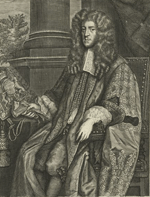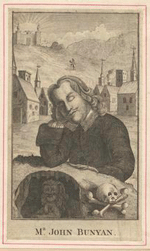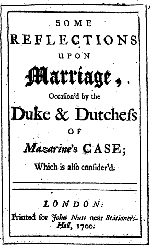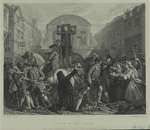| |
 |
E210 | Divided Interests: dismembering and re-membering the "body politic" in the culture of the Restoration | Winter 2009
The famous illustration for Thomas Hobbes’s The Leviathan conveys the kinds and degrees of institutional and imaginative power necessary to maintain the “body politic.” And for Hobbes, England’s civil war[s] provided the images of disorder that constituted the ‘state of nature.’ We see throughout the Restoration and the years immediately following the turn of the century innumerable efforts to re-create a uniform polity. Those efforts were sometimes characterized by a desire for “comprehension” and a willingness to tolerate differing practices. But those efforts were sometimes dominated by the strategy of suppressing non-conformity, disabling dissent, disallowing exceptionality, an effort to force the recreation of a unitary society. The thesis of this course is that this is the period in which divided and competing interests were institutionalized—through official toleration of dissent, through the advance of sometimes very scrappy political partisanship, and through the growth of equity as a means of recognizing married women’s separate property.
Course Information || Mail Archive || Noteboard||
|
| |
DATE |
In class today
|
Supporting Materials |
Wednesday, 1/7
Hobbes, Leviathan, title page
|
Introduction
Quentin Skinner, "Hobbes on Persons, Authors, and Representatives" from the Cambridge Companion to Hobbes's Leviathan. [Available through UC's licensed agreements.]
|
The Leviathan heretical:, or, The charge exhibited in Parliament against M. Hobbs justified by the refutation of a book of his entituled The historical narration of heresie and the punishments thereof by John Dowel, 1683 |
Wednesday,1/14

NPG 804, John Wilmot, 2nd Earl of Rochesterby Unknown artistoil on canvas, circa 1665-1670
|
Thomas Hobbes, Leviathan (1651), The first part, "Of Man," Read Chap. I, II, VI, & VIII.
Skim Chap. III, IV, V, VII, VIII, IX & X.
Read XI, XII, XIII, XIV, XV, & XVI || Noteboard: Kelly
John Wilmot, The Earl of Rochester, A Satyr Against Reason and Mankind (e-text) (March 1675?) || Noteboard: Jenny
Recommended:
"Quentin Skinner's Hobbes" || Noteboard: Rosanna
"The Macpherson Version"
English Civil War || Noteboard: Luke
NB: The painting to the left is owned by the National Portrait Gallery, which charges for use of its images. Since our site is for educational purposes only, and since the painting is dated 1665-1670, I think it ought to be available for course websites (it would obviously be impossible for individual faculty [or departments] to pay for the use of all the images in websites. If the NPG asks me to remove the image, I will do so.
|
An answer to a book published by Dr. Bramhall, late bishop of Derry; called the Catching of the leviathan. Together with an historical narration concerning heresie, and the punishment thereof. By Thomas Hobbes of Malmesbury , London : printed for W. Crooke at the Green Dragon without Temple-Barr, 1682.
SQ-Satyr Against Reason and Mankind
|
Wednesday, 1/21
|
Hobbes, Leviathan, The second part, "Of Common-Wealth," selections.
Rochester, "A Satyre on Charles II"
Solemn League and Covenant
Solemn League and Covenant, 2
Solemn League and Covenant, 3
|
SQ-Satyre on Charles II |
Wednesday, 1/28
|
Hobbes, Leviathan, Parts III & IV, selections |
|
Wednesday, 2/4

James Scott, Duke of Monmouth
|
John Dryden, Absalom and Achitophel
E-text for Absalom and Achitophel
Online text copyright © 2005, Ian Lancashire for the Department of English, University of Toronto.
NB: Please see notes at end of Absalom & Achitophel
The story of Absalom from Jewish Encyclopedia
Amnon, Tamar, & Absalom (II Kings 13)
Absalom's death, David's mourning (II Kings 18)
Heroic couplet handout |
SQ Absalom and Achitophel |
Wednesday, 2/11

1st Earl of Shaftesbury, Achitophel |
Dryden, Absalom and Achitophel
John Locke, Two Treatises, selections
Introduction, Parts III, IV, & V
Book I:
Preface & Ch. I, II ( § 6--8); V, VI (§ 50, 52--55, 61--63), VII (§73, 75, 77).
Book II:
Ch. I, II, III, IV, V, VI, VII ( §77-87, 89), VIII (§95-97, 99, 119-20), IX ( §123-27), XIII ( §149, 156), XV (169-172), XVIII, XIX
|
Locke SQ
|
Wednesday, 2/18

John Bunyan, as dreamer
|
John Bunyan (1628-1688), The The Pilgrim’s Progress (1678)
Look up OED definition of typology.
See Handout on typology
Galatians (typology) |
SQ The Pilgrim's Progress
The story of Hagar & Ishmael
The story in Genesis
19 c. Illustrations for TPP |
Wednesday, 2/25

title page
Another title page
|
Bunyan, The Pilgrim's Progress (cont)
Mary Astell, Some Reflections Upon Marriage |
|
Wednesday, 3/4

Title page
|
Astell, Some Reflections Upon Marriage
Daniel Defoe, Shortest Way with the Dissenters (1702) (ECCO)
Shortest Way (another etext)
Whig
Whig-p.2
Tory
|
Shortest Way With the Dissenters SQ
The Act for Preventing Occasional Conformity
Sir Humphrey Edwin's provocative act of occasional conformity
dissoi logoi --different or contrasting words: Introduction to concept (from a writing website)
dissoi logoi -- Routledge Encyclopedia of Philosophy. See also the teaching of Protagorus
An enquiry into the occasional conformity of dissenters in cases of preferment with a preface to the lord mayor, occasioned by his carrying the sword to a conventicle EEBO |
Wednesday, 3/11

Defoe in the pillory
|
Daniel Defoe, Shortest Way with the Dissenters (ECCO) |
Reflections Upon a Late Scandalous and Malicious Pamphlet Entitul'd, The Shortest Way with the Dissenters; or Proposals for the Establishment of the Church (1703) |
| How might it be useful in your thinking about the "body politic" to juxtapose the illustration for Hobbes's Leviathan with the image of Defoe in the pillory? |
|
|
|
|

